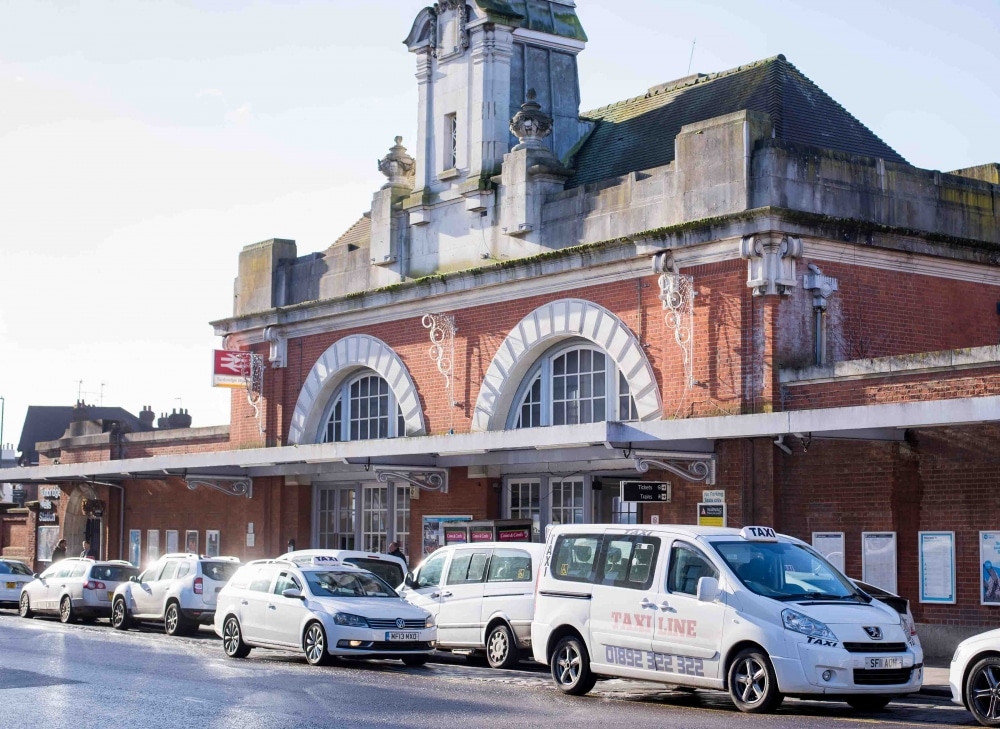Despite the lifting of all restrictions, passenger numbers are below 50 per cent of the pre-Covid levels and cabbies face a double whammy of increasing regulation making it harder to obtain licences.
“The rank outside the station does not move any more,” said Baraki Shujaullau, Chairman of the Hackney Carriage Association in the town.
“When a train used to pull into the station in the afternoon, around 20 to 30 cars would go from the rank. These days, we are lucky if five or six taxis get taken.”
He says falling commuter numbers as people work from home has caused the day trade to plummet, while drivers in the night economy are not faring much better.
“People are going out to pubs, restaurants and clubs and then getting a lift home. They don’t think taxis are [Covid] safe,” said Mr Baraki. “But all our drivers wear masks, we have hand sanitation, ventilation. Taxis are very Covid safe and secure.”
Taxi drivers earn £4.00 for the first mile and around £2.50 for each subsequent mile, but they also have to pay out around £360 a year for a taxi licence and £370 for a badge, along with other required payments such as DVLA and criminal record checks, an MOT every six months, and medical examinations.
Mr Baraki said the effect the fall in trade has had on drivers means that many are quitting because there is not enough work to go around.
“Before lockdown I would get around 12 jobs in an afternoon shift. During lockdown this fell to around two,” he explained.
“We are happy the rank is now at least moving, but we are now at around 50 per cent of the passenger numbers that we had before.
“So many drivers are leaving and going off to do something else because they are just not making any money.”
He warned that unless people began using taxis again, this exodus of drivers will mean getting a cab in the town would become increasingly difficult.
“We can’t get new drivers. They have to wait months for a licence and there has been a large increase in regulations.
“Around 20 years ago, when I got my licence it took about two months. We now have drivers waiting five, six months – even longer, and in that time drivers can’t earn money, so they go and do something else.
“We even have to get a certificate now to show we know how to put a seatbelt on – all drivers know how to fix a seatbelt – yet we have to book a test with a company to get this certificate, and these firms have a three-month waiting list.”
New drivers are also obliged to take a ‘knowledge test’ by Tunbridge Wells Borough Council [TWBC] before they can be granted a licence.
TWBC said there are currently 107 hackney carriage licenses in the borough, but the authority has no record of how many licence holders are currently operating.
A spokesperson did add that in normal times the council receives around ten applications from new drivers each year, but so far in 2021 they have received just two.
RAIL USE SEES A SLOW RISE
Rail passenger numbers are beginning to increase, new figures show, although officials are not expecting commuter numbers to return to pre-pandemic levels in the next 12 months.
Demand for rail travel reached two-thirds of normal levels last month for the first time since the coronavirus pandemic hit, provisional Department for Transport figures show.
The data reveals the number of journeys made on Britain’s ma rail network on Monday August 23 was at 66 per cent compared with the equivalent date in 2019.
This is up from 56 per cent three weeks earlier.
However, John Halsell, Southern Regional Managing Director for Network Rail, has said that commuter numbers are not likely to return to pre-pandemic levels over the next 12 months.
He commented: “A pessimistic view would be a prediction of around 60 per cent of pre-pandemic passenger numbers.
“More optimistically, we think it will be around 80 per cent. And that’s in part as we think a lot of people will still combine going to the office with working from home.
“At the moment, we’re running perhaps at 40 per cent of passenger numbers. So we don’t currently need to put on 100 per cent of the services we once did. But as we see what the demand is like then there’s flex in the timetables to add services.”








